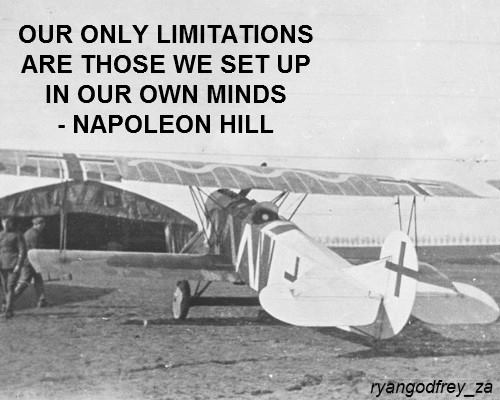
Several provinces have adopted a no-fault insurance system designed to help streamline the claims process. This system can be very beneficial to insurance customers, but it can also be confusing. If you aren’t quite clear on what no-fault really means and how it affects your insurance, you are not alone. Fortunately, no-fault insurance is not complicated; it simply outlines how claims are handled by the insurance companies involved.
No-Fault Doesn’t Mean No one is at Fault
A common misconception about no-fault insurance is that the insurance companies will not make a fault determination in the event of an accident. Having no-fault insurance doesn’t mean you can’t be found at fault for an accident. In every claim situation where two drivers are involved, the insurance companies will always determine who is at fault.
No-fault insurance simply means that it does not matter who is found at fault; your insurance company will handle your claim and pay out for damages and injuries to you. The other person’s insurance company will do the same. Someone will still be determined to be negligent in the accident, and that person may experience a potential rate increase upon renewal or when shopping for car insurance quotes. Fault can also be split between the two parties in percentages, in which case both may see an increase in insurance rates.
The Benefits of No-Fault Insurance
No-fault insurance can benefit the insured in a variety of ways. In the tort system, the two insurance companies would investigate the accident and determine fault – then, the company whose insured driver was found responsible would pay for all of the repairs and damage. No-fault insurance simplifies the process of getting claims paid out by having your insurance company pay for your damages, no matter who is at fault.
Drivers will receive insurance benefits quickly and without the long drawn out process of litigation. There is no need to fight with another insurance company in order to get benefits and the cost of a legal battle is avoided by both sides. This allows you as the insured to get your car repaired quickly and to have medical issues taken care of without worrying if the other insurance company will refuse to pay or argue fault.
No-fault insurance generally cuts out the incredible cost of lengthy legal battles that use time and resources – all of which add up to higher insurance rates overall, because the insurance companies have to spend more money fighting every claim. Some provinces do still allow injured parties to sue for pain and suffering, economic loss or both while others do not. This allows injured parties to recover losses beyond the limits of the policy.
The Cons of No-Fault Insurance
Although no-fault insurance does make things simpler in the event of a claim, it also changes the negative manner in which at-fault parties are impacted. Although the party found at fault will face insurance rate increases, the injured party’s insurance will still have to pay out on the claim; rather than the at fault party’s insurance company taking the full responsibility. Some people feel that the no-fault insurance system protects bad drivers, while leaving good drivers without recourse when their property is damaged or they are injured.
No-fault insurance does not eliminate the problem of resources wasted on lawsuits. Although the promise of no-fault insurance has been to keep overall premiums for insurance down by reducing wasted resources on claims fought out in courts, insurance rates as a general rule continue to rise. As each province has determined whether or not an injured party has the right to sue, in some provinces legal battles continue, impacting overall insurance rates.
What No-Fault Insurance Means to You
If you live in a no-fault insurance province and have a claim, you can expect that your insurance company will pay out on the claim in a relatively speedy manner. To receive benefits, you will not have to wait for fault to be determined or for a long fight between the insurance companies to be resolved. Depending on the province in which you live, you may have the right to sue for pain and suffering or economic loss or both, but you will receive immediate benefits up to the policy limits without delay.
If you are found to be partially or completely at fault in the accident, you may see an increase in your insurance rates on renewal – as such, you may want to compare your car insurance rate and find the lowest available rate. You do have the right to appeal a fault determination – but remember that in some provinces such as Ontario, fault determination is set out in very clear guidelines. In many provinces you may also still face a lawsuit for damages that exceed the limits of the injured party’s policy.
If you are not at fault, your insurance company will pay out for your damages up to the policy limits, and you will not likely see an increase in rates. If the policy limits are reached and you are still at a financial loss, your provincial laws may allow you to sue for the difference.
No-fault insurance has both pros and cons, as does tort insurance. In some cases it can make the claims process much simpler; but this varies from claim to claim and province to province. It’s important to be aware of the laws in your home province in regards to the right to sue. Remember that no-fault still means you can be found at fault, so drive safely and responsibly every time you get behind the wheel
 The Cannabis Act, also known as Bill C-45, came into effect Oct. 17, legalizing recreational marijuana. Here’s how this landmark decision affects your Home, Auto and Life insurance. For more information see The Co Operators Insurance
The Cannabis Act, also known as Bill C-45, came into effect Oct. 17, legalizing recreational marijuana. Here’s how this landmark decision affects your Home, Auto and Life insurance. For more information see The Co Operators Insurance







 Are you at a cross roads in your life? Or are you looking to grow a business? No matter what your personal goal is – no one person can do it alone. You need to attract people into your life who will move you forward towards that dream.
Are you at a cross roads in your life? Or are you looking to grow a business? No matter what your personal goal is – no one person can do it alone. You need to attract people into your life who will move you forward towards that dream. I have been a student of Napoleon Hill & his life’s work for over 10 years. As a coach and motivational speaker I often talk to people about the Law of Attraction. ‘You attract into your life the things you think about the most’. In my Ottawa Woman’s Mastermind group I give out ‘Gold Star’ stickers (old school) when someone has an “AH HA” moment. It is fun and makes people smile.
I have been a student of Napoleon Hill & his life’s work for over 10 years. As a coach and motivational speaker I often talk to people about the Law of Attraction. ‘You attract into your life the things you think about the most’. In my Ottawa Woman’s Mastermind group I give out ‘Gold Star’ stickers (old school) when someone has an “AH HA” moment. It is fun and makes people smile.